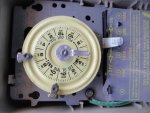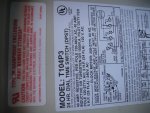Hello,
I recently inherited a ~12 y.o. pool and am new to the world of pool maintenance. I have read many of the pool school articles but was wondering if anyone could assist with a pool timer question.
My pump timer doesn't seem to turn - eg always says ~2pm. It is an analog timer so it never hits the timer dogs to turn off/on.
Is there a way to diagnose the issue other than replacing the timer?
Also, the pool has a Kreepy Krauly cleaner. When I turn the pool pump off and then on, it starts the cleaner running. But sometimes the cleaner just stops, not sure why.
Does the Kreepy Krauly run always, as long as the pump is running? Or is there a separate time/schedule that I can set the cleaner to run for. I am guessing the cleaner should not run 12-24 hours/day?
Thanks for your help,
Aaron.
I recently inherited a ~12 y.o. pool and am new to the world of pool maintenance. I have read many of the pool school articles but was wondering if anyone could assist with a pool timer question.
My pump timer doesn't seem to turn - eg always says ~2pm. It is an analog timer so it never hits the timer dogs to turn off/on.
Is there a way to diagnose the issue other than replacing the timer?
Also, the pool has a Kreepy Krauly cleaner. When I turn the pool pump off and then on, it starts the cleaner running. But sometimes the cleaner just stops, not sure why.
Does the Kreepy Krauly run always, as long as the pump is running? Or is there a separate time/schedule that I can set the cleaner to run for. I am guessing the cleaner should not run 12-24 hours/day?
Thanks for your help,
Aaron.




